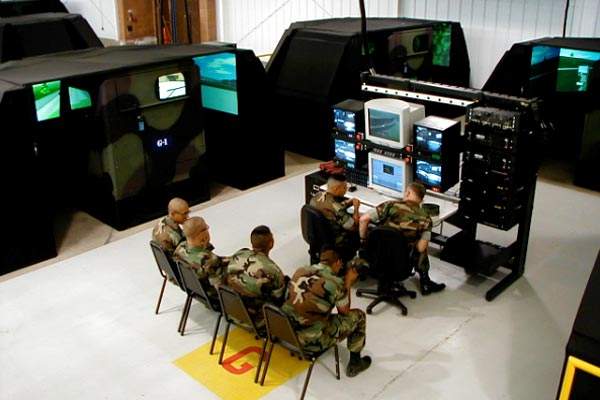Along with entertainment, the military was one of the first industries to invest a significant amount of money into the development of virtual reality (VR) applications, VR headsets, and VR platforms.
Listed below are the key aerospace and defence trends impacting the virtual reality industry, as identified by GlobalData.
Virtual reality Platform and system design
Engineers and designers from the aerospace and defence industry have realised the potential of virtual reality for the early conception stage of platforms and systems. The ability to simulate a part or even the entirety of a project in a virtual room without having to manipulate any hard material is an invaluable asset. Lockheed Martin, Rolls-Royce, and BAE Systems have started to systematise the use of such virtual rooms for certain production lines. It allows more collaboration between design and manufacturing teams, limiting the potential for errors during the subsequent production of hardware and facilities.
Engineers can also explore and resolve existing technical problems more efficiently in an interactive environment, while headsets can be considered for individual use by designers working on a project.
Training
The potential for VR training applications has long been recognised by the aerospace and defence industry. VR simulators can place military trainees in the uncertainty and stress-generating situations they will have to confront in operations, while military and civilian pilots have been trained in simulators since the Cold War.
The advances in VR technologies in the past 20 years have been seized upon by simulator manufacturers, who are developing increasingly elaborate solutions for air force, land, and naval troops. The Defense Intelligence Agency uses VR language training to place their employees in “high risk” scenarios to practice their language skills. Most of the top defence contractors have explored the field of VR training and smaller players like Cubic have specialised in it.
Reconnaissance
The combined advances of AI, robotics, and VR technologies will open new options for military reconnaissance techniques. It is now technically possible to send a cheap drone to recognise a contested zone in order to quickly gather intelligence, send back the information to the controller, and reconstitute a 3D map of the terrain.
How well do you really know your competitors?
Access the most comprehensive Company Profiles on the market, powered by GlobalData. Save hours of research. Gain competitive edge.

Thank you!
Your download email will arrive shortly
Not ready to buy yet? Download a free sample
We are confident about the unique quality of our Company Profiles. However, we want you to make the most beneficial decision for your business, so we offer a free sample that you can download by submitting the below form
By GlobalDataPlanning
In conjunction with the developments in VR training techniques, certain armed forces are progressing with VR-based strategic planning. Training allows individual soldiers to be immersed in complex and hostile environments similar to those they will have to confront on the field. Using the same principle, military commanders can expand the scope of VR to reconstitute an entire theatre of operations and simulate different tactics and their outcomes. South Korea’s armed forces are considering using headset-based VR game simulations to improve commanders’ decision processes.
COVID-19
Virtual training seems to be a natural solution to the challenges posed by Covid-19. It can be deployed at the point-of-need, allowing warfighters in disparate locations to train for individual and collective skills.
The coronavirus can also act in many ways as a driver to better meet the military’s future training needs. During the pandemic, maintaining readiness while also respecting strict social-distancing guidelines is paramount. Virtual training, with some effort, can meet today’s needs, while also creating an essential structure for the military’s future synthetic training needs.
This is an edited extract from the Virtual Reality in Aerospace and Defense – Thematic Research report produced by GlobalData Thematic Research.










Related Company Profiles
Cubic Corp
Lockheed Martin Corp
Rolls-Royce Holdings Plc
BAE Systems Inc